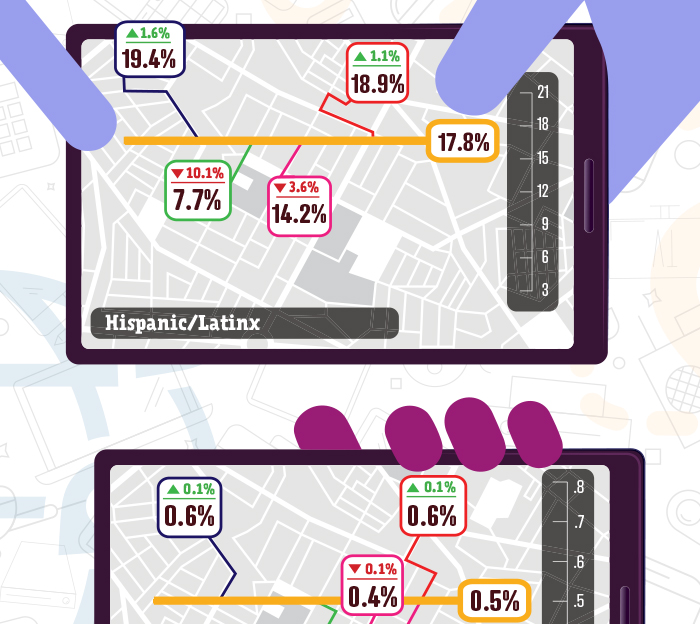Click above for complete view.
Missed Opportunities
Compiled by Joseph Roy
The National Science Board has defined underrepresented minorities in science and engineering as those racial or ethnic groups whose representation in S&E occupations is smaller than in the overall US population. However, as a recent NSB analysis reveals, that underrepresentation varies—sometimes greatly—based on education level.
The board compared a group’s overall workforce participation rate with its share of a specific segment. For instance, the analysis found that the gap between the percentage of Black or African Americans in STEM fields versus the overall workforce was more than double for individuals with bachelor’s degrees (-4.5 percent) than for those without (-1.9 percent). American Indian/Alaska Native workers with bachelor’s degrees are slightly underrepresented in STEM but that figure flips for those without bachelor’s degrees. Hispanic/Latinx STEM professionals with a bachelor’s degree or higher show the largest representational gap for STEM workers: -10.1 percent.
In addition, an assessment of STEM salaries demonstrates that a potential wealth gap is still being perpetuated. Across the three groups, the gaps in representation are greater at higher levels of education. The difference in median salary between STEM workers with and without a bachelor’s degree was $34,800 in 2019.
Source: National Science Board, National Science Foundation. 2021. “The STEM Labor Force of Today: Scientists, Engineers, and Skilled Technical Workers.” Science and Engineering Indicators 2022. NSB-2021-2. Alexandria, Va. Available at https://ncses.nsf.gov/pubs/nsb20212. The data represented are from an analysis of 2019 NSF and Census data sets.
Design by Toni Rigolosi
